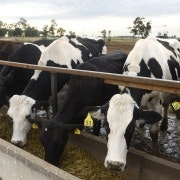Optus dials up Telstra
The tactic – and one suspects the submission may be more tactical than strategic -- is aimed at an Optus vulnerability and one that at face value helps to support Telstra's ongoing argument that the ACCC's pricing of unconditioned local loop (ULLS) access forces Telstra to provide access to its competitors below its actual costs and at levels that deter them from investing in their own infrastructure.
The application for an exemption from having to provide Optus access to the copper network is particularly pointed, because Optus actually has its own reasonably extensive fixed line infrastructure. Optus owns an hybrid fibre coaxial (HFC) cable network, built at a cost of billions of dollars, that passes more than 2.2 million homes in urban Australia, but increasingly chooses to serve its customers by buying access to Telstra's network.
Telstra argues that is because the cost of ULLS access is below the marginal costs of providing the services on Optus' own network. Most of the growth in Optus' customer base for telephony and broadband services is based on ULLS.
The application to effectively deny Optus access to the ULLS in areas where the HFC is present is one of a flurry of applications for exemptions from providing ULLS access that Telstra lodged last year. It has also mounted a High Court challenge against the ACCC's access pricing regime, arguing that it equates to compulsory acquisition of Telstra's property without just compensation. The ACCC has consistently rejected Telstra's proposed $30 per customer a month charge for access to its network, instead indicating it wants to cut the charge to $17.70 per customer per month.
The attempt to shut Optus out of its network is presumably just another plank in the ongoing ULLS pricing debate but it has particular resonance because its highlights the peculiarity of Optus choosing to buy capacity from Telstra in preference to using its own infrastructure. That tends to provide credibility for Telstra's view that the ACCC has mispriced – under-priced – access to its network. It says ULLS access prices have fallen 60 per cent in five years, despite increases in input costs.
Optus has installed about 360 digital subscriber line access multiplexers (DSLAMs) in Telstra exchanges to enable it to offer broadband and telephony services using Telstra's copper lines. Just over 200 of the DSLAMs are in exchange serving area where the HFC network has been deployed.
Optus argues that, while the cable passes 2.25 million homes, only 1.4 million are "serviceable". Telstra's Foxtel HFC network treats only seven per cent of the 2.5 million homes passed by its network as unserviceable.
The main reason for the difference appears to be that Optus regards ''multi-unit dwellings'' as unserviceable. It has advanced a number of reasons for that, among them network design and the practical difficulties of dealing with body corporate and the bulkiness of the necessary equipment that has to be installed in each apartment – although neither Telstra nor Austar appear to have found the hurdles insurmountable.
The more obvious reason is that cabling up apartment blocks is expensive. It's simply cheaper to buy access from Telstra.
Telstra argues that Optus owns a competitor network and should be forced to use it in the long-term interest of competition and consumers. Infrastructure-based competition is generally regarded as preferable to that created by regulated access.
Telstra says that where Optus chooses to use its network it has penetration rates (of the ''serviceable'' homes) similar to those achieved by Virgin Media in the UK and broadband penetration comparable with cable operators in the US. That is an attempt to undermine Optus' argument that the success of cable operators offshore is due to the fact that incumbents generally have been prohibited from owning cable networks or providing pay TV services. Interestingly, Optus has more cable modem subscribers than Telstra – which suggests that the Optus HFC service can be competitive.
If Telstra were successful (its success rate with the ACCC is abysmal ) Optus would lose the valuable option it has today of being able to choose between using its own network or Telstra's.
Telstra argues that would force Optus to invest in its own network and would provide it with incentives to expand its coverage and capabilities and, as is occurring overseas, provide competing infrastructure if a ''next generation network'' is built in this country and the DSLAMs become stranded and ULLS access a redundant concept.
That suggests another potential strand of reasoning for the application, an attempt to position Optus' HFC cable as potentially competing infrastructure in the key urban markets if Telstra can convince the Rudd Government that only it can build the national fibre-to-the-node network that was promised during the election.















